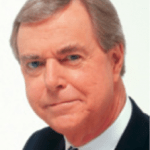After the Siege: Winners and Losers

Column / Don Newman
Like a bad dream, the three-week blockade of Parliament Hill and Ottawa’s downtown core finally ended with some semblance of normalcy at the end of February. But like the fallout of COVID-19, “normalcy” after the takeover of central Ottawa by a motley group of Canadians spouting often-seditious and mostly nonsensical rhetoric, may not look the same as before they arrived in the capital.
How and why it happened will be the subject of an inquiry. But an assessment of which political parties helped to finally end the blockade, or aided and abetted prolonging it, has already begun.
The early returns: Prime Minister Justin Trudeau and his Liberal government managed to avert disaster and are now generally credited with getting rid of the occupiers. But for many people, including long-time Conservatives, that party’s behaviour was so bizarre and supportive of the occupiers that the damage Conservatives have done to themselves may be irreparable.
When the blockade began, Trudeau was quarantined with COVID-19. The Conservatives were doing something they like to do regularly —stabbing their leader in the back and getting ready to replace him with another potential sacrificial lamb. But before Erin O’Toole was shown the door, the deputy leader, Candice Bergen, had written a memo recommending the party not be critical of the occupiers because the demonstration could hurt the Liberals and redound to the Conservatives’ benefit.
That was dubious advice at best. But Bergen is from rural Manitoba. Trudeau and the Liberals are particularly unpopular there. So, Bergen then led the way in going out to meet the protesters, having photographs taken with them, posing in a Donald Trump MAGA hat with some of the drivers and going for pizza with some others. And she wasn’t the only one. Other Conservative MPs – particularly from Saskatchewan – followed suit.
Bergen is quick on her feet and good in the House. That’s why a few days later, when O’Toole was summarily dismissed by the Conservative caucus, they selected her as interim leader. But she is not a great political strategist and suddenly she had to adjust. She told the occupiers they had to go home, that the Conservatives would continue to fight for their issues. But other Conservative MPs were less dismissive. Pierre Poilievre, a leading candidate to be the party’s new leader, said he still fully supported the blockaders.
After the Ambassador Bridge between Windsor and Detroit was also blockaded – and then cleared when Ontario Premier Doug Ford declared a state of emergency in the province, the pressure in Ottawa was really on to get the occupiers out of downtown.
So, Trudeau decided he had to act. In municipal crises such as city blockades, the chain of responsibility is supposed to run upward. The city has the primary role, followed by the province. Only after those are exhausted is the federal government meant to be involved. However, in Ottawa, the city police were clearly overwhelmed and said so, and the provincial government seemed strangely unconcerned. Those two facts, plus the general feeling that since Ottawa is the national capital, and it was COVID mandates from the federal government the protesters said they were opposing, it became seen as something the Trudeau government would have to deal with.
And so, it did. The Liberals invoked the Emergencies Act, the first time it had been used since its passage in 1988. The act was passed by a Conservative government led by Brian Mulroney. This time, the Conservatives, led by their interim leader, said the act wasn’t needed and voted against its use. This enraged more traditional Tories, especially after the demonstrators were dispersed without serious incident in less than three days.
How this all plays out remains to be seen. First, in a Conservative leadership race that could split the party, then in a general election which, given the minority government, could come at any time.
And how it plays out in the liberal Party is an open question. After a drowsy beginning in this crisis, Trudeau recovered his footing, got rid of the protesters, and is seen for now as the winner. But the occupation of Ottawa showed just how polarizing and disruptive a political figure he has become. If the Conservatives stick together and pick a more broadly electable leader – and that is a big if – then the Liberals will have to decide whether, after a decade as party leader and seven years as prime minister, Justin Trudeau is still the leader they need to keep them in office.
Contributing writer and columnist Don Newman, an Officer of the Order of Canada and Lifetime Member of the Parliamentary Press Gallery, is Executive Vice President of Rubicon Strategy, based in Ottawa.
